Parents’ Communication Toolkit: Paraverbals, It’s All in How You Say It
Welcome back to our series on parent/child communication strategies, where we focus on different strategies and facets of communication to build connection and facilitate dialogue- we’re happy you’re here!
The phrase “It’s not what you say, it’s how you say it'' has become a cliche at this point, but for good reason! There are many factors outside of the actual words being spoken that affect how communication is received. This blog will focus on paraverbal communication, and our next blog will discuss non-verbal communication.
What is Paraverbal Communication?
Paraverbal communication refers to the way that the tone, pitch, and cadence of our voices affect the way our messages are received. We’ve all felt the impact of a statement shift based on how it was delivered. A simple greeting can take on a range of meaning based on the tone it's given. It has been estimated that paraverbal messages account for 38% of what is communicated to someone. Children are astoundingly perceptive, and as the language centers of their brains are developing, paraverbal and non-verbal cues may take precedence over the content of your message in how it is processed. Knowing how important these factors are, we can use them to our advantage to enhance communication and connection
Tone is the aspect of paraverbal communication we’re most likely to be aware of, but managing it is not always easy. Tone is key to communicating the emotion behind your words. It determines whether a phrase conveys love, curiosity, disapproval or any other emotion. lands lovingly, with curiosity, or disparagingly. Tone is where underlying frustrations, fatigue and distraction, natural parts of a parent’s world, can inadvertently make themselves known. As mentioned in previous posts, simple mindfulness skills such as structured breathing or setting an intention can help you use tone as a tool to enhance your communication rather than a detractor.
Pitch is something children naturally vary as they express themselves. As a caregiver, pitch can be used strategically to engage or re-engage your child. A shift to a higher or lower pitch will grab their attention and may elicit a response when they are occupied by something else or seem to have lost interest in the conversation. You can use pitch to indicate enthusiasm, create a sense of intrigue, indicate humor, or make a conversation feel more intimate and personal.
Cadence, or pacing of words, is another element of communication that can be used purposefully. It is important to keep tone in mind as we consider cadence, because it influences the impact cadence has on the way our messaging is received. For example, a quick cadence with a clipped tone might be interpreted as rushed or distracted, but a quick cadence in a light tone might build excitement or indicate silliness. A slowed down cadence can be useful in signaling the importance of a message and in communicating that you are present and receptive to communication.
It is important to note that when verbal messages and para or non-verbal messages conflict with one another, listeners, especially children, tend to believe the non-verbal information. Consistency across these aspects of communication is critical to limit confusion and disconnect.
Utilizing different elements of paraverbal can bring a sense of playfulness and animation to conversations, as well as indicate a sense of attunement and connection that is both engaging and relationship fortifying. This is also reassuring in that even if you can’t alway find the right words, your intention and meaning can still be received by your child!
-
An Ode to Teachers and School Staff
Nonverbal Communication with Children
Listening Skills to Help Cultivate a Healthy Connection with Your Child
How to Effectively Communicate with Your Child’s Mental Health Therapist
Counseling for Communication Skills & Boundary Setting
How to Use Questions to Build Engagement & Improve Communication
Search Our Other Blogs!
Interested in Counseling for Caregiving, Parenting, Communication Skills, & Boundary Setting?
If you’re a Marylander who knows that counseling is the direction you need to take, the therapists at LifeSpring Counseling Services are here to help. We offer online counseling services for mindfulness, depression, anxiety, trauma, and grief and loss. We also offer Brainspotting as a specialized service, and Brainspotting can be done online, too!
Here’s how you can get started! Online counseling for caregiving, parenting, communication skills, and boundary setting aren’t the only services offered at our Maryland office
The counselors and social workers at our Maryland office also offer counseling services for trauma, grief and loss, boundary setting, communication skills, and difficult life transitions. We also offer specialized counseling services including Brainspotting and spiritually-integrated counseling. Because we are located next to several local universities, we also work with college students and international students.
Written by: Liza Krohn, LCSW-C


